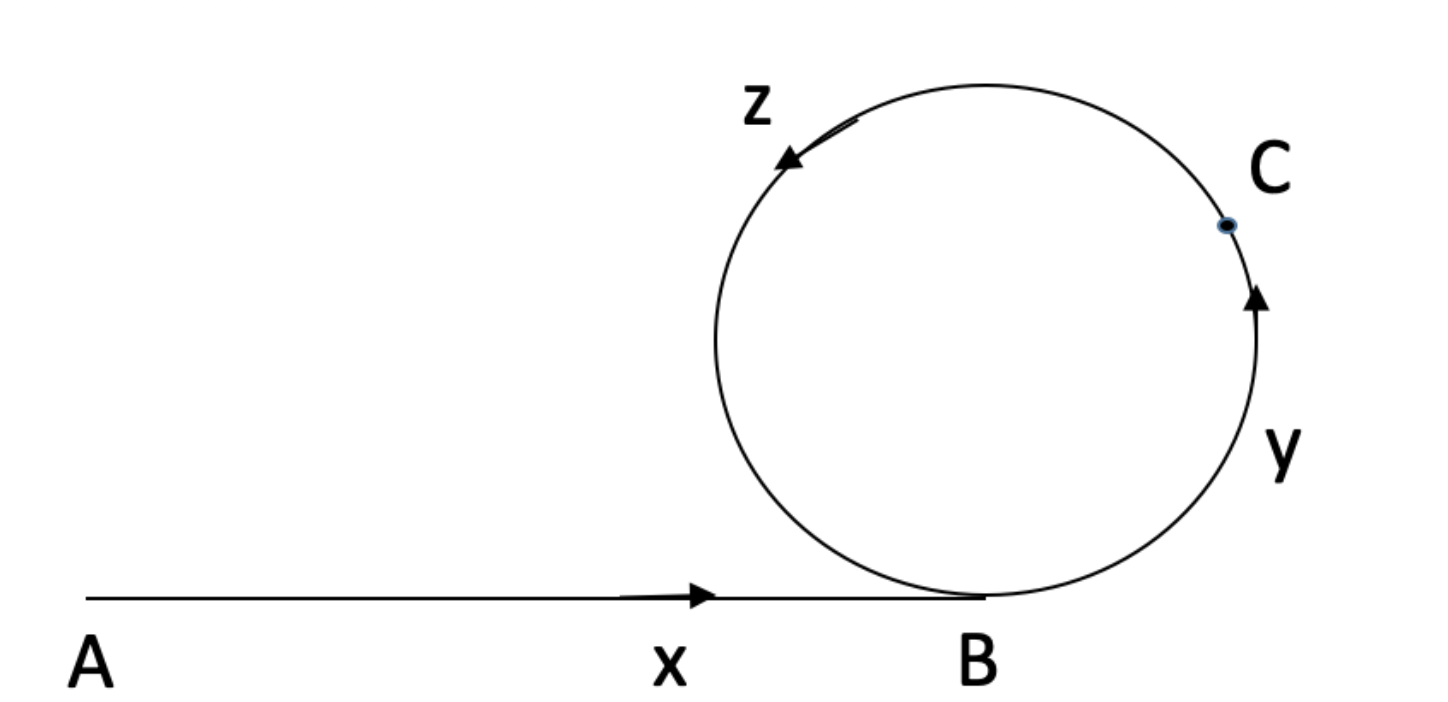题目描述
Given a linked list, return the node where the cycle begins. If there is no cycle, return null.
To represent a cycle in the given linked list, we use an integer pos which represents the position (0-indexed) in the linked list where tail connects to. If pos is -1, then there is no cycle in the linked list.
Note: Do not modify the linked list.
题意:给一个链表,判断这个链表是否有环,如果有环,返回环的入口节点。
算法1
题解:使用快慢指针,快指针每次走两格,慢指针每次走一格,当两个指针第一次相遇的时候,将慢指针返回起始点,然后快慢指针每次走一格,再次相遇就是环的入口节点。
证明:这里使用的是类似@yxc的讲解图。假设A是链表起点,B是链表环的入口,C是二者第一次相遇的地方。AB,BC,CB的距离分别为$x,y,z$,那么环的长度就是$y+z$二者第一次相遇时,可以知道二者分别走过的距离是:
$slow:x+y+k_1(y+z)$
$quick:x+y+k_2(y+z)$
因为快节点走过的距离是慢节点的两倍:$2(x+y+k_1(y+z))=x+y+k_2(y+z)$
可以得到$x+y=(k_2-k_1)(y+z)$
进一步得到$x=(k_2-k_1-1)(y+z)+z$
也就是说AB之间的距离是整数倍个环长度加上CB的长度。那么如果两个节点分别在A,C两点开始走,一个节点从A走到B$dist = x$,另一个节点必然也会同时到达B,$dist = (k_2-k_1-1)(y+z)+z$。
C++ 代码
ListNode *detectCycle(ListNode *head) {
if(!head || !head->next) return NULL;
ListNode* slow = head;
ListNode* quick = head;
while(quick && quick->next)
{
slow = slow->next;
quick = quick->next->next;
if(slow == quick)
{
slow = head;
while(slow !=quick)
{
slow = slow->next;
quick = quick->next;
}
return slow;
}
}
return NULL;
}


好像是有点小问题,x + y = (k2- 2k1)(y + z) 思路很棒
是的,这里公式推导有点小问题hh
写的很清晰
妙